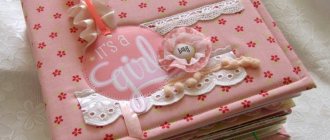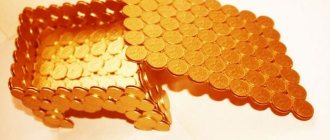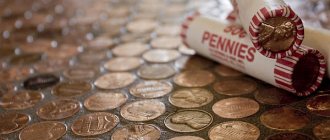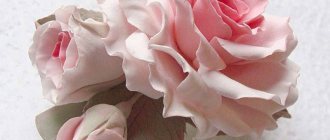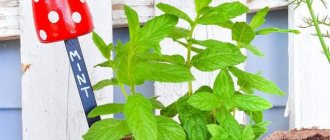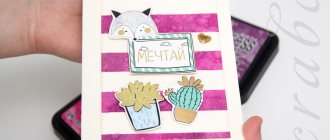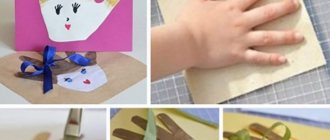DIY coin album
Numismatics only seems like a simple hobby on the part of people new to this type of collecting. In fact, this is a whole science. A collector needs to not only study the types of valuable coins, but also learn how to clean and store them correctly.
Without this, new acquisitions will eventually lose their former appearance. An important area of concern for a numismatist is where coins are stored. Most of their albums are incredibly expensive. You can make a product to house your collection yourself.
How to make an album for coins with your own hands quickly and economically? This will require available materials and patience.
Basic storage rules
Storage rules must be observed, since if they are violated, the coins may darken, deform their relief, and cause corrosion. The following recommendations are distinguished:
- Coins are stored separately from each other;
- Products should be protected from exposure to sunlight;
- It is better to place the album in a dark place at room temperature;
- The storage location must be dry, as humidity provokes the appearance of corrosive deformations and stains;
- You need to remove collectibles not with your fingers, but with plastic tweezers;
- If you pick up a coin with your fingers, you need to take it by the edge to prevent fingerprints from appearing;
- The product must lie freely in the cell intended for it.
Following the rules will allow you to keep your collection in pristine condition.
How and from what to make a bookcase for storing stamps:
First, you still need to find out the sizes of your stamps and their expected number. But this is not particularly important, since everything can then be changed and missing elements added.
You will also need basic computer knowledge, the most convenient way to do this is: First, you need to mark an A4 sheet of paper by dividing it into special sections delimited by triangles, which will then hold the stamps.
Figure No. 1 – Example of a workpiece
You just need to think in advance about how you want to arrange the stamps or bills and print a special blank.
Figure No. 2 – Appearance of A4 sheet, with blanks
These triangles will hold the stamps after you make the special cut. The most convenient way is to first bend in half those places on the sheet where the blanks are drawn. Although you can make slits using a paper knife, it is much more convenient and you don’t need to bend anything, but I made them with scissors.
Figure No. 3 – Paper bending lines Figure No. 4 – Folded workpiece
When everything is marked, you need to lightly and carefully cut the paper along the line of triangles, thereby obtaining holders.
Figure No. 5 – Making a cut along the line of the triangle Figure No. 6 – Bent triangle
As a matter of fact, that’s the whole procedure, the most difficult part of the book is completed, now all you have to do is lightly bend the triangles and tuck your stamp in there.
Figure No. 7 – Putting stamps into holders Figure No. 8 – One sheet of a bookcase with stamps
If you look from the back, you can clearly see that the stamps are tucked quite tightly into the holders, the main thing is to guess the sizes.
Figure No. 9 - Reverse side of the sheet
Of course, in order for the stamps to be well preserved, it is advisable to isolate them from the external environment, and store the stamp itself in a dry, safe place.
To keep the stamps in good condition, all you need to do is simply place your sheet of paper in an ordinary file, and also, for greater reliability, you can seal it with tape; this generally almost eliminates the possibility of moisture or fungi getting in there.
Figure No. 10 – Stamps in the file
In order to smooth out the bends (you made them when cutting the triangles), you just need to put something even and heavy on top, or just wait - it will straighten itself out over time. And if you cut through the holders with a stationery knife, then you don’t need to bend anything. Such an impromptu bookkeeper is very convenient, because you can store all the files with stamps in any suitable folder, it is convenient to flip through them, view, change or add new exhibits. The main thing is that a book of this kind makes it possible to continue the collection ad infinitum, because the idea is quite universal. And my option for storing stamps is very cheap compared to a purchased book.
You can store coins in the same way, but I recommend that you take plain paper, preferably thin cardboard, and your collection will be in perfect order.
Many philatelists who invest their money in www.inaroo.com know how difficult it is to find a good album for stamps at a fairly reasonable price: either it is very expensive or the quality is poor. And few know that stamps can be stored not only in special albums and collectors.
Ways to make an album for coins
You can make your own coin album from the following materials:
- Sheet A4;
- File;
- Soldering iron or sewing machine;
- Scotch;
- Stationery knife.
Tools for making an album
Using these materials, you can make a coin album with your own hands using two methods: with and without a soldering iron. But, in any case, before work you will need to prepare a stencil. For it you need to take the largest coin and draw a cell for it on paper. The cell size should be several millimeters larger than the collectible item. Cells can be standard or custom sizes. In the second case, you need to outline cells for coins of different sizes.
For the first method, you need to attach the file to the completed stencil and secure it with paper clips. Then, using a soldering iron, the outline of each cell is outlined. To place the collection in the resulting chambers, you should cut the top of the file in each cell. The resulting cuts, after the coins are placed inside, are sealed with tape.
In the second method, the file is replaced with dense plastic. Similarly, 2 sheets of plastic are attached to the stencil, but the cells are formed not with a heated soldering iron, but with the help of a sewing machine. It must be powerful enough to handle the plastic sheet.
You can replace a sewing machine with an awl.
They manually punch the material, after which it is attached to the sheet with a thread and a needle. The top layer of plastic is cut using a stationery knife. After placing the coin inside, the cut is sealed with tape. The resulting sheets can be placed in a file. Collection files are placed in a folder.
There is another way to make an album for coins with your own hands, but it will require an additional voluminous business card holder and cardboard. First, a stencil is prepared. It is placed under the business card folder file. Using a soldering iron, draw lines according to the stencil. Once the chambers are ready, cuts are made on the top of the chambers and coins are placed inside.
For the best appearance of the collection, it is recommended to place cardboard of the appropriate size in each cell. This album looks very aesthetically pleasing. It is both reliable and compact.
Creating an Album Using a Soldering Iron
However, working with a soldering iron requires experience. At first, prepare for burning through the paper and uneven lines.
To reduce the damage from your inexperience, it is better to first practice on unnecessary files.
Second way
This method is much simpler than the first, because in the process you can do without a soldering iron.
Related article: DIY Chinese headdress
It is necessary to prepare the following materials and tools:
- Ring folder;
- Plastic and transparent folders in A4 format;
- Markers;
- Stationery ruler;
- Sewing machine;
- 2 types of stationery knives - narrow and regular.
Beginning of work:
- Draw a template with a ruler and felt-tip pen. Draw a stencil in the form of a grid on a piece of paper. One coin is filled into a capsule. Cells should be 2 times larger in size than collectible coins.
- The stencil is secured with tape under a plastic folder. Transfer all the lines onto the plastic base.
- Using a sewing machine, sew the seams along the lines.
- Using a sharp utility knife, cut off the top edge of the cell along the line. The cuts start from the wrong side.
- Clean the coins with a cleaning agent and place them in capsules.
- Cover the back of the cells with adhesive tape.
The album for numismatists is ready!
A simple and beautiful album will serve collectors to store coins for many years.
Placing coins in albums
Before placing the collection in an album, pre-processing will be required. It suggests dehydration. This can be done using acetone. Coins are soaked in it for 20 minutes. However, this method is only suitable for products with a strong patina. In other cases, coins are placed in a drying cabinet.
The systematization of the collection is determined by its owner. It can be chronological or thematic. Systematization is very important, as it eliminates the need to frequently move items from one album to another.
Storing coins in albums helps preserve their shine and aesthetics. Plastic serves as protection from the sun, dust, and moisture. Products can be placed independently from each other. The album facilitates the convenience of reviewing the collection and its convenient systematization. The storage space itself, if done well, is a thematic addition to the collection.
LiveInternetLiveInternet
Yuri_Dudanov
all posts by the author
Before you get down to work, decide what size you will make the album and how many sheets it will contain. Buy a draftsman's kit at the store - standard sheets of drawing paper - and make an album out of them. By purchasing such a set, you will save yourself from difficult work that requires great care and precision - cutting out sheets according to a template.
Now about the number of sheets in the album. Ten sheets are the best option. The album page must be thick, so we will glue each of the three sheets of drawing paper together. And so that two of them are with the longitudinal (lobar) direction of the fibers, and one is with the transverse direction (Fig. 1^). If you neglect this rule, the sheet will “lead” when gluing - it will bend in one direction, and the stamps will fall out from pockets. Let us recall how the direction of fibers on paper is determined. Select one sheet of paper from the pack, take it by the edges, try to bend it several times, first in the longitudinal, then in the transverse directions. In which direction the paper bends easier will be the fractional direction.
For the album you will need 30 sheets: 20 longitudinal and 10 transverse. Set the transverse sheets aside for now, and cover the lobar sheets on one side with black paper (Fig. 2). Cover the pasted sheets with sheets of thin paper, fold them into a bundle, and place thick plywood or a wide board with a small weight (1.5-2 kg) on them. While the sheets are drying, make a template to mark out the pockets. Cut out a blank from cardboard according to the format of the album sheets and mark it, as shown in Figure 3.
Mark the top and bottom on the cardboard and cut out rectangular windows (Fig. 4). Check whether the pasted sheets have dried, if everything is in order, carefully push them to one side (align them) and use the tip of scissors to make a small dent on the left side of the stack - the mark will indicate the spine area of the sheet. Then use the template. Take a sheet from the stack, align it with the sides of the template (the spine of the sheet should be on the left) and, tilting the knife at an angle of approximately 45°, make slits on the paper, as shown in Figure 5. And again fold the sheets of paper into a bundle.
Pockets for stamps should be cut out of transparent, colorless material: cellophane or tracing paper. In these materials, just like in paper, the fibers can be located in different directions. We need strips with a longitudinal direction (Fig. 6). Insert the strips into the slots of all longitudinal sheets (Fig. 7, top). Now they need to be secured with glue. First, secure one side of all the strips to all the sheets.
The same Figure 7 (below) shows how the other end of the strip is glued. Lubricate the place where the end of the strip will be glued with glue, and, slightly stretching it, press it against the sheet with your finger. Let the glue “set” and start working on another pocket. When gluing the pockets, try not to pull the strips too tight, otherwise the sheet may bend.
To finally secure the strips, glue the back side of each longitudinal sheet with thin paper, maybe newspaper {rig. 8). Arrange the sheets with paper, put them in a bundle and dry them for two to three hours under a load (Fig. 9).
The next operation is one of the most critical (Fig. 10). Place the lengthwise sheets face down, spine margins inward, into two stacks: ten in each. Prepare glue and a pack of transverse - we will call them intermediate - sheets. Take one longitudinal sheet from the pack, coat its reverse side with glue, and then carefully place the intermediate sheet on it. Smooth out the sheets to avoid wrinkles. Now take a longitudinal sheet from another pack and also coat its reverse side with glue. Carefully place it on the intermediate sheet. The remaining sheets of the album are glued together in the same way. Edge ten sheets glued from three blanks with fabric strips 14-15 mm wide (so as not to fray), line them with paper and place them under a load for one or two days (Fig. 11). When gluing, you, of course, tried to combine the parts of the blanks. To tell the truth, even experienced bookbinders do not always succeed in this job. So align the block. Push the dried pack onto the front (front margin of the block), prepare a thick ruler and a bookbinding knife. Now you need to trim the radicular field (Fig. 12). While working, try not to press on the knife; from time to time, sharpen (sharpen) it using a fine block and fine sandpaper. Take your time, rushing can only ruin things. For beginning bookbinders, if there is no press, we advise you to clamp the block at least between two thick slats.
After trimming, disassemble the block into two bundles, five sheets each. Sheets in bundles should be positioned with the spine margins inward (see Fig. 10, left). To make the album open easily, the sheets need to be glued together in pairs with strips of durable material: calico or fabric. Bookbinders call them falchiks. Figure 13 shows how the folds are edged. It is difficult to apply glue to narrow strips of fabric, so use a sheet of plexiglass (Fig. 14). Using a large brush, carefully apply an even layer of glue to the surface of the plexiglass and place the strips on it. Cover the plexiglass with paper and iron it with your palm: the strips will stick to the plexiglass. Then remove the paper and, slightly prying the strip with a knife, peel it off the plexiglass (Fig. 15).
Place the strip on the table with the adhesive surface facing up. Take a sheet from each pack and place first one, then the other on the strip as shown in Figure 16A. When gluing, try to lay them on the strip more accurately. All ten sheets are glued together using folding sheets. After gluing, you will have five double sheets. Fold each double sheet along the fold so that the edges of the pages match (the strip itself should remain inside the folded sheets). Line the pages with sheets of clean paper and let them dry. After 5-10 minutes, repeat the operation of gluing the folds, although now double (folded) sheets (Fig. 16B). You will have two notebooks left - four sheets each. They also need to be glued together with a fold (Fig. 16C), and then the last remaining double egg should be glued to the resulting block (Fig. 16D). The block is fastened, but not completely. Cut tissue paper to fit the sheets - use the template for the pockets. Place newspaper on the table and spread out (lay out) the prepared sheets of tissue paper as shown in Figure 17 A, approximately 5 mm apart.
Now coat the paper with glue. Figure 17A shows how to work with a brush. The next operation - inserting tissue paper into the block - try to do it quickly if possible, otherwise the glue will dry out and the tissue paper will warp. Glue the tissue paper end-to-end to the fold (Fig. 17B). To equalize the thickness of the block with the spine and edged front, place spacer sheets between the pages (they should fit between the folds and edges), and then glue the endpapers on top and bottom - sheets of thick paper folded in half (Fig. 18). The spacer sheets remain in the block until the end of work. It's time to glue the spine of the block. Place cardboard on both sides of the block, a weight on top and coat the spine thoroughly with glue. Before the next operation - punching out the spine - you will have to wait an hour or two until the glue dries.
As soon as the block is dry, take a mallet and begin to round (knock out) the spine (Fig. 19). The rounding of the spine gives the album a real, “book” look. First, “walk” the top edge of the spine with a mallet. When it is slightly rounded, turn the block over and repeat the operation. If both edges are rounded equally, the job is done well. To finally secure the spine of the block, stick a strip of starched gauze or a wide bandage on it. Reinforce the upper and lower edges of the spine with captals.
Work with the block is completed, move on to the binding cover. It consists of two cardboard sides, a paper backing and a covering material - calico, lederine or fabric covered on the inside. There is a lot of material about this on the Internet! We hope that Figures 21-23 will help you complete this job. Place the finished album between the cardboards and place it under a press.
Series of messages “Useful information”:
Part 1 - Storing postage stamps Part 2 - Almost everything about postage stamps... Part 6 - The world of philately. Chapter 3. Part 7 - Thematic plan for the issue of state postage marks of the Republic of Kazakhstan for 2012 Part 8 - How to make a bookkeeper or stamp album Part 9 - Cool community! Part 10 - Where to buy stamps in Ukraine (Kyiv)? ... Part 26 - Don’t be tempted! The DPR doesn’t have its own stamps yet! Part 27 - Some tips for designing a stamp collection. Part 28 — Stamp issue plan for 2015
Collector for stamps or banknotes of different sizes:
No matter how many collectors you buy, there are still very few of them :) And when the collection of stamps, bills, stickers, greeting cards or envelopes is continuously replenished, the need for a place to store them also increases. Everyone, even a novice philatelist or numismatist, knows where to buy a collection book, but not everyone can afford it. It is especially difficult to choose and buy a suitable bookkeeper when the collected specimens have different sizes. And this is where the advice of craftsmen comes to the rescue. I would like to say right away that most of the proposed options for homemade stock books involve long and painstaking work. Although collectors are patient people by nature, but... A book collector should be simple, cheap, convenient, reliable and versatile. It turned out to be quite easy to combine all these qualities. The idea of my version of a homemade book is quite original and simple.
Requirements and materials for manufacturing
The actual way to create an album isn't that different. As basic materials you will need:
- A4 sheet of paper;
- office file;
- marker or felt-tip pen;
- ruler;
- soldering iron;
- simple stationery tape;
- stationery knife;
- folder with binder.
As a result of simple manipulations, in both cases you will receive an album in the form of a folder with a binder, in which the required number of sheets-envelopes with coins enclosed will be enclosed. But before you start creating your first album, you need to draw the proposed cells on a piece of paper using a ruler and marker. This will give you a stencil.
Varieties for numismatists
Albums with coins are sold in special stores for numismatists. There are many types of albums, but most often sellers offer customers separate special sheets with special money holes of different sizes. There is a special space for signatures. Such albums have a very high price, so not every collector can afford this luxury; it is easier to make an album yourself.
There are 2 ways to make a coin album. Our material will describe both methods in detail.
Key Points in Making Your Coin Collection Album
We take a sheet of paper and carefully draw it with a marker into the squares needed for the coins. You should know that the dimensions of these squares should always be slightly larger than the diameters of your money - after soldering, the squares will shrink a little in size, and this must be taken into account. When you already have pennies of different sizes, there are two options for placing the squares:
- one row for those coins that are larger in size, the next row for smaller ones;
- one of the sheets is made for pennies of one size, the next one for another size, and so on.
- We lay one of the sheets of paper (or it’s better to take cardboard for this), carefully place the file on it and then cover it with the lined sheet. We fasten everything very carefully with rigid paper clips.
- You need to heat up the soldering iron. Then we place a ruler on the drawn line and begin to carefully move along it with the soldering iron tip. If you have never worked with a soldering iron before, just make a test sheet. And don't worry if it doesn't work out right away. Remember - it’s not the gods who burn the pots! All comes with experience. This must be done several times. Just don’t press too hard - you can burn both the sheet and the file underneath it. Thus, you need to go through all the lines with a soldering iron. Already on your first sheets, you will most likely “get” your hand and learn to correctly distribute the pressure and speed of drawing lines.
- When all the pockets are prepared, we do the following - carefully use a knife (or blade) to cut holes for placing your pennies in these cells, and only on the reverse (or wrong) side. You need to retreat literally a couple of millimeters from the upper commissure, no more. Then we simply place the coin and seal this cut with tape - it turns out very neatly.
- We place all the sheets of coins in the binder, making sure that all the cuts sealed with tape are on the “back” of each page. On top of each sheet we glue a thin strip of paper with an inscription (these are either the years of the coins, or the country, or something else), so that later it will be easier for you to navigate your book for your coin collection.
For those who like to always do everything efficiently, there are a few more steps.
They will help turn a DIY album designed for storing your collectible coins into a real work of art. You need to buy leather or leatherette, and from this material you can quickly make a beautiful cover for a binder, which will then turn into a do-it-yourself album designed to store your coins. You can then find a leather burner to create a beautiful design on your coin book. You can sacrifice one of your coins, heat it up very high, and burn its imprints on the skin - it will turn out wonderful and excellent!
What will you need?
Many people wonder what the coin album is called. The answer is simple - such a device is usually called a classer. The cost of a self-made coin album is quite low, since its manufacture does not require any expensive materials or tools. What you need to prepare to make an album:
- Files: the more there are, the more spacious the album will be. It is advisable to purchase transparent rather than matte files.
- A sheet of A4 paper.
- Binder: It is important that this is a quality binder as this will determine the longevity of the album.
- Stationery: felt-tip pen, pencil, ruler, square, tape, paper clips.
- Soldering iron.
The good thing about a binder album is that you can put any number of sheets with coin slots in it.
How to make a coin album with your own hands
Experienced numismatists store their treasures in special albums, everyone knows this. But not every novice collector needs a full-fledged large album if the collection itself barely contains a dozen coins.
However, you will definitely need it in the future if you like numismatics, because organizing the collection and its proper storage is simply necessary.
But specialized albums are quite expensive. What to do if it is not possible to acquire them at the moment? You can do it yourself! Moreover, there are quite a lot of ways to create your own albums, but among them it is worth highlighting the two most simple and easily implemented in everyday conditions.
